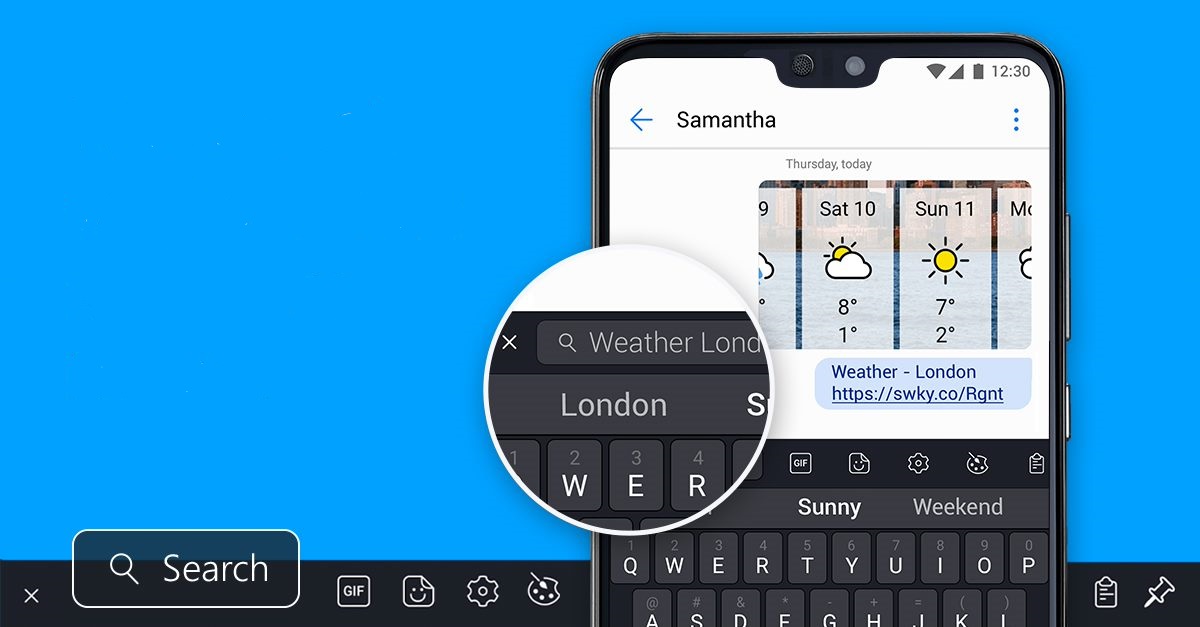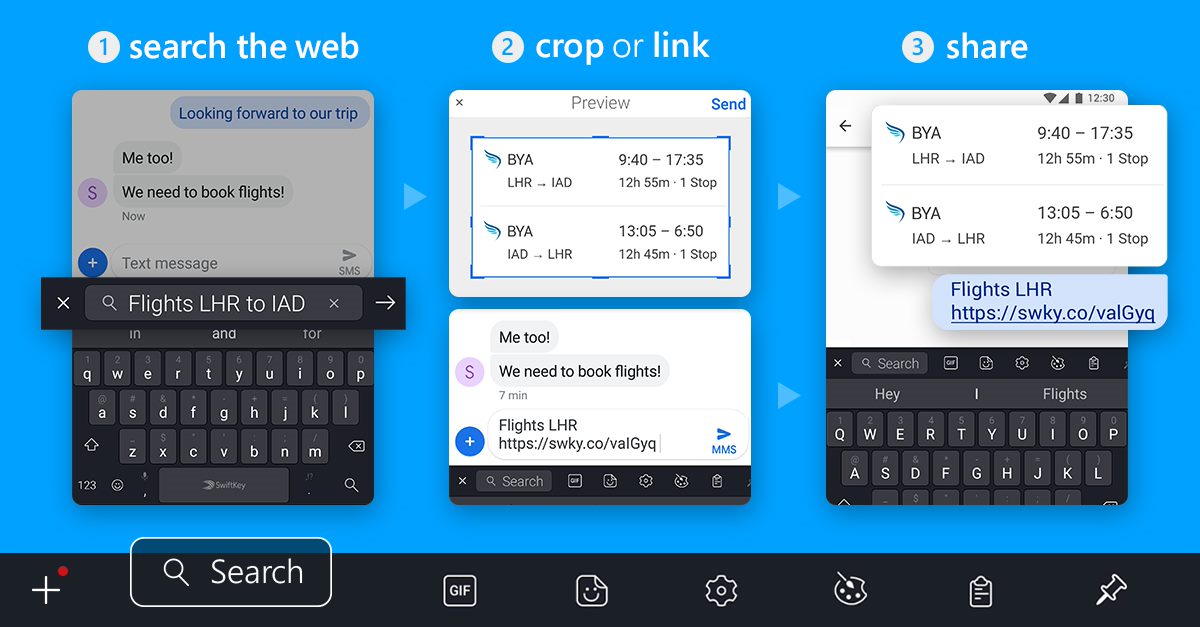
SwiftKey’s new feature lets you share anything on the internet with your friends in an instant
SwiftKey is making it easier for people to share content from the internet by embedding a search engine into its keyboard.
The new feature lets users quickly access results from Bing, which they can then screenshot, crop and send to friends as they are messaging each other. They can capture an image of an entire webpage, a single picture or a snippet of text.
“We’re always looking for ways to make typing and messaging faster and smarter for our users,” said Colleen Hall, Senior Product Manager at SwiftKey, Microsoft’s intelligent keyboard app. “By having Search right there in the keyboard, users can browse for information and share it with their contacts without leaving the conversation, whether that’s for quick fact-finding, checking the local weather or sharing news headlines and images in a message.”
To access the new feature, users can tap on the “+” symbol in the top left corner of their SwiftKey keyboard, select the Search icon and type in what they are looking for. Entering a search term will give them results from Bing, while typing in a URL will take them to that webpage.
The new SwiftKey feature is available for Android devices in 11 countries: the UK, US, Canada, France, Germany, Australia, Japan, Brazil, India, Italy and Spain.
It is the latest update for SwiftKey, whose keyboard has been installed on hundreds of millions of devices across the world.
In September, the company integrated Microsoft Translator into its Android keyboard, letting users chat in different languages by translating messages in real-time.
In March it rolled out SwiftKey 7.0, which introduced Toolbar – an expandable menu – and Stickers that can be added to messages.
The keyboard also contains neural network technology that is better at suggesting words as people type. Having previously seen the phrase “Let’s meet at the airport”, it is able to infer that “office” or “hotel” are similar words that could also be appropriate predictions instead of “airport”.
It also understands that “Let’s meet at the airport” has a similar sentence structure to “Let’s chat at the office”. This allows SwiftKey to offer users the most appropriate prediction or autocorrection based on the sentence being typed.


